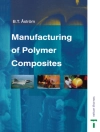The safe operation of plants is of paramount importance in the chemical, petrochemical and pharmaceutical industries. Best practice in
process and plant safety allows both the prevention of hazards and the mitigation of consequences. Safety Technology is continuously advancing to new levels and Computational Fluid Dynamics (CFD) is already successfully established as a tool to ensure the safe operation of industrial plants.
With CFD tools, a great amount of knowledge can be gained as both the necessary safety measures and the economic operation of plants can
be simultaneously determined. Young academics, safety experts and safety managers in all parts of the industry will henceforth be forced to
responsibly judge these new results from a safety perspective. This is the main challenge for the future of safety technology.
This book serves as a guide to elaborating and determining the principles, assumptions, strengths, limitations and application areas of
utilizing CFD in process and plant safety, and safety management. The book offers recommendations relating to guidelines, procedures, frameworks and technology for creating a higher level of safety for chemical and petrochemical plants. It includes modeling aids and concrete examples of industrial safety measures for hazard prevention.
Зміст
PREFACE
COMPUTATIONAL FLUID DYNAMICS: THE FUTURE IN SAFETY TECHNOLOGY
ORGANIZED BY PROCESSNET: TUTZING SYMPOSION 2011 CFD – ITS FUTURE IN SAFETY TECHNOLOGY
Process Net – an Initiative of DECHEMA and VDI-GVC 5
A Long Discussed Question: Can Safety Engineers Rely on Numerical Methods?
CFD AND HOLISTIC METHODS FOR EXPLOSIVE SAFETY AND RISK ANALYSIS
Introduction
Deterministic and Probabilistic Design Tasks
CFD Applications on Explosions and Blast Waves
Engineering Methods: The TNT Equivalent
QRA for Explosive Safety
Summary and Outlook
PART ONE: CFD Today – Opportunities and Limits if Applied to Safety Techology
STATUS AND POTENTIALS OF CFD IN SAFETY ANALYSES USING THE EXAMPLE OF NUCLEAR POWER
Introduction
Safety and Safety Analysis of Light Water Reactors
Role and Status of Fluid Dynamics Modeling
Expected Benefits of CFD in Nuclear Reactor Safety
Challenges
Examples of Applications
Beyond-Design-Based Accidents
PART TWO Computer or Experimental Design?
SIZING AND OPERATION OF HIGH-PRESSURE SAFETY VALVES
Introduction
Phenomenological Description of the Flow through a Safety Valve
Nozzle/Discharge Coefficient Sizing Procedure
Sizing of Safety Valves Applying CFD
Summary
WATER HAMMER INDUCED BY FAST-ACTING VALVES – EXPERIMENTAL STUDIES, 1D MODELING, AND DEMANDS FOR POSSIBLE FUTURE CFX CALCULATIONS
Introduction
Multi-Phase Flow Test Facility
Extension of Pilot Plant Pipework PPP for Software Validation
Experimental Set-Up
Experimental Results
Possible Chances and Difficulties in the Use of CFX for Water Hammer Calculations
CFD – The Future of Safety Technology?
CFD-MODELING FOR OPTIMIZING THE FUNCTION OF LOW-PRESSURE VALVES
PART THREE: Fire and Explosions – are CFD Simulations Really Profitable?
CONSEQUENCES OF POOL FIRES TO LNG SHIP CARGO TANKS
Introduction
Evaluation of Heat Transfer
CFD-Calculations
Conclusions
CFD SIMULATION OF LARGE HYDROCARBON AND PEROXIDE POOL FIRES
Introduction
Governing Equations
Turbulence Modeling
Combustion Modeling
Radiation Modeling
CFD Simulation
Results and Discussion
Conclusions
CFD – The Future of Safety Technology?
MODELING FIRE SCENARIOS AND SMOKE MIGRATION IN STRUCTURES
Introduction
Hierarchy of Fire Models
Balance Equations for Mass, Momentum, and Heat Transfer (CFD Models)
Zone Models
Plume Models
Computational Examples
Conclusions
CFD – The Future of Safety Technology?
PART FOUR: CFD Tomorrow – The Way to CFD as a Standard Tool in Safety Technology
THE ERCOFTAC KNOWLEDGE BASE WIKI – AN AID FOR VALIDATING CFD MODELS
Introduction
Structure of the Knowledge Base Wiki
Content of the Knowledge Base
Interaction with Users
Concluding Remarks
CFD AT ITS LIMITS: SCALING ISSUES, UNCERTAIN DATA, AND THE USER.S ROLE
Numerics and Under-Resolved Simulations
Uncertainties
Theory and Practice
Conclusions
VALIDATION OF CFD MODELS FOR THE PREDICTION OF GAS DISPERSION
IN URBAN AND INDUSTRIAL ENVIRONMENTS
Introduction
Types of CFD Models
Validation Data
Wind Tunnel Experiments
Summary
CFD METHODS IN SAFETY TECHNOLOGY – USEFUL TOOLS OR USELESS TOYS?
Introduction
Characteristic Properties of Combustion Systems
Practical Problems
Outlook
PART FIVE: Dynamic Systems – Are 1D Models Sufficient?
DYNAMIC MODELING OF DISTURBANCES IN DISTILLATION COLUMNS
Introduction
Dynamic Simulation Model
Case Study
CFD- The Future of Safety Technology?
Nomenclature
DYNAMIC PROCESS SIMULATION FOR THE EVALUATION OF UPSET CONDITIONS IN CHEMICAL PLANTS IN THE PROCESS INDUSTRY
Introduction
Application of Dynamic Process Simulation
Conclusion
Dynamic Process Simulation – The Future of Safety Technology?
THE PROCESS SAFETY TOOLBOX – THE IMPORTANCE OF METHOD SELECTION FOR SAFETY-RELEVANT CALCULATIONS
Introduction – The Process Safety Toolbox
Flow through Nitrogen Piping During Distillation Column Pressurization
Tube Failure in a Wiped-Film Evaporator
Phenol-Formaldehyde Uncontrolled Exothermic Reaction
Computational Fluid Dynamics – Is It Ever Necessary?
Computational Fluid Dynamics – The Future of Safety
Про автора
Jürgen Schmidt has worked as a safety expert for more than 25 years at Hoechst AG, Frankfurt and BASF SE, Ludwigshafen, Germany. Since 2002 he lectures in Process and Plant Safety at the Karlsruhe Institute of Technology, Germany. Prof. Schmidt studied Process Engineering at the University Bochum, Germany, and at the Texas A&M University, USA. His main fi elds of interest are smart safety concepts (combining safety and economics), two-phase gas/liquid flow, safety devices and cyclone separators, high pressure fluid flow and condensation in natural gas pipelines. He has published more than 100 scientifi c articles in these areas.
Prof. Schmidt is member of the steering committee of Process Net?s Safety Engineering Section (a group of Dechema) in Germany and chairs the working group ‘Safe Design of Chemical Plants’. Currently he leads ISO’s standardization working party for ‘Flashing liquids in safety devices’. In addition he is member of the board in the European DIERS User Group. He has received numerous awards from the Industry
and the European Process Safety Centre.












